Effect of Simultaneous Application of Glass Fiber Reinforcement and Polymer-Modified Asphalt Emulsion on DBST’s Resistance to Aggregate Loss Using Laboratory Investigation
Abstract
1. Introduction
2. Materials and Methods
2.1. Materials
2.1.1. Aggregates
2.1.2. Asphalt Emulsion
2.1.3. Glass Fiber Reinforcement
2.2. Methods
2.2.1. Bitumen Bond Strength Test
2.2.2. Sweep Test
- The asphalt specimen disk was prepared, and the weight before the application of the surface treatment was measured.
- The surface treatment was applied on the disk and cured for 25 °C in an oven. In this experiment, two different curing times, 3 h and 24 h, of the asphalt emulsion were tested to see the effect of the curing time on the film formation and adhesive properties of the surface treatment.
- The specimen was preconditioned at 35 °C in 30% relative humidity an hour before the start of the test.
- The initial weight of the disk and the surface treatment was determined.
- The sweep test was conducted at 0.83 gyrations per second for 60 s.
- After the test, the specimen was weighed for the final reading.
2.2.3. Hamburg Wheel-Track Test
- Cylindrical specimens were fabricated and securely placed in the mounting system. The weight of the asphalt surface course was determined before applying the surface treatment layer. After the application of the DBST on the asphalt surface course, the specimens were set aside to promote the curing process for 24 h at 25 °C.
- After curing, the specimens were weighed for an initial reading.
- The mounting system with the specimens was tightly fastened into the device with the height of the specimen being adjusted accordingly.
- The temperature of the water bath was set to 25 °C. Before starting the actual test, a delay time of 45 min was set to ensure that the test specimens’ temperature was uniform.
- After the delay time, the HWT test started with a loading cycle and applied load set to 10 cycles and 175 N, respectively.
- After the 10 loading cycles, the final weight of the specimens was determined.
2.2.4. MMLS3
- Slab test specimens were fabricated for both typical and modified DBST. The weight of the asphalt surface course was determined before applying the surface treatment layer. After the application of the DBST on the asphalt surface course, the specimens were set aside to promote the curing process for 24 h at 25 °C.
- Before testing, the initial weight of the specimen was measured.
- The specimen was installed in the MMLS3 by placing it on the steel base plates and securely fastening it.
- After installing the specimens, the whole MMLS3 setup was covered with the environment chamber using a crane. In this study, as the test is not concerned about the moisture resistance of the pavement material, the water bath was not utilized, and the temperature of the environment chamber was set to a typical ambient temperature of 25 °C. The specimen was kept inside the chamber for 3 h of conditioning.
- After stabilizing the temperature of the specimen, the wheel load was applied to the specimen, and the test was started. Five loading cycles (1000, 2000, 5000, 8000, and 13,000) were assigned to be the checkpoints to weigh the specimen for the monitoring of aggregate loss.
3. Results and Discussions
3.1. Bitumen Bond Strength Test
3.2. Sweep Test
3.3. Hamburg Wheel Track Test
3.4. MMLS3
4. Summary and Conclusions
- BBS test results showed that modified DBST had a greater resistance to vertical tensile action-induced aggregate loss than typical DBST. Moreover, based on the remaining amount of asphalt binder on the substrate after the failure of the asphalt emulsion due to vertical tensile action, the failure mode of all specimens was cohesive. This means that the adhesive bond between the aggregate and asphalt emulsion was stronger than the internal cohesion of the asphalt emulsion itself.
- Based on the sweep test results, modified DBST performed better than the typical DBST in terms of aggregate loss against sweeping action.
- Comparing the BBS test and sweep test results between 3 h and 24 h of curing time, it can be observed that a longer curing time of the asphalt emulsion led to greater resistance of the surface treatment to aggregate loss, regardless of the presence of an additive. As an application to actual pavement construction, a longer time should be allotted before opening newly constructed surface treatment for the asphalt emulsion to fully cure and reach its highest performance.
- The HWT test results presented superior resistance to aggregate loss induced by the braking action of modified DBST against typical DBST. Comparing the values of the aggregate loss percentage of the HWT test to other tests, it was observed that values were higher due to the tremendous shear that braking motion applies to the pavement in addition to the vertical load of the wheel.
- In the MMLS3 test, modified DBST and typical DBST were observed to have almost the same performance against aggregate loss at loading cycles of less than 8000, with modified DBST having higher aggregate loss. However, after 8000 loading cycles, typical DBST’s aggregate loss abruptly increased, while modified DBST resulted in a lower aggregate loss at 13,000 loading cycles. Thus, modified DBST was found to be more resistant to long-term aggregate loss than typical DBST when the rolling load was applied after finishing 13,000 loading cycles.
- Based on the results of the tests, glass fiber-reinforced polymer-modified DBST shows a promising potential for actual application due to its positive results compared with typical DBST.
- Further tests can be conducted to support the results with more repetitions of the test procedure. Moreover, including other factors for future experiments, such as varying environmental conditions, the presence of moisture, and different levels of aging, would produce a more thorough investigation of the study.
Author Contributions
Funding
Institutional Review Board Statement
Informed Consent Statement
Data Availability Statement
Conflicts of Interest
Abbreviations
| PMS | Pavement management system |
| BST | Bituminous surface treatment |
| DBST | Double bituminous surface rreatment |
| SBR | Styrene–Butadiene rubber |
| CRS | Cationic rapid-setting |
| SBS | Styrene-butadiene styrene |
| BBS | Bitumen Bond Strength |
| PATTI | Pneumatic adhesion tensile strength testing instrument |
| AASHTO | American Association of State Highway and Transportation Officials |
| POTS | Pull-off tensile strength |
| ASTM | American Society for Testing and Materials |
| HWT | Hamburg wheel-track |
References
- Wang, J.; Xu, X.; Pan, Z.; Jiang, L.; Liu, X. Recent Developments in Pavement Management for Road Maintenance: Equipment, Software, and Standard. In CICTP 2020; American Society of Civil Engineers: Reston, VA, USA, 2020; pp. 883–893. [Google Scholar] [CrossRef]
- Li, J.; Mahoney, J.; Muench, S.; Pierce, L. Bituminous Surface Treatement Protocol; Technical Report; Washington State Department of Transportation: Washington, DC, USA, 2007. [Google Scholar]
- Bituminous Surface Treatments. Available online: https://pavementinteractive.org/reference-desk/maintenance-and-rehabilitation/maintenance/bituminous-surface-treatments/ (accessed on 28 October 2023).
- Overby, C.; Pinard, M.I. Development of an Economic and Practical Alternative to Traditional Bituminous Surface Treatments. Transp. Res. Rec. 2007, 1989, 226–233. [Google Scholar] [CrossRef]
- Buss, A.; Guriguis, M.; Claypool, B.; Gransberg, D.; Williams, R.C. Chip Seal Design and Specifications: Final Report; Technical Report; Oregon Department of Transportation: Portland, OR, USA, 2016. [Google Scholar]
- AGC. Chip Seal Guide for Application and Construction; Technical Report; Arizona Chapter Associated General Contractors: Phoenix, AZ, USA, 2013. [Google Scholar]
- Burke, W.E. User’s GUide: Double Bituminous Surface Treatment; Technical Report; U.S. Army Center for Public Works: Washington, DC, USA, 2004. [Google Scholar]
- NCHRP. NCHRP Synthesis 342: Chip Seal Best Practices; Technical Report; National Cooperative Highway Research Program: Washington, DC, USA, 2005. [Google Scholar]
- Serigos, P.A.; Smit, A.d.F.; Prozzi, J.A. Performance of Preventive Maintenance Treatments for Flexible Pavements in Texas; Technical Report; University of Texas at Austin. Center for Transportation Research: Austin, TX, USA, 2017. [Google Scholar]
- Alkofahi, N.; Khedaywi, T. Stripping Potential of Asphalt Mixtures: State of the Art. Int. J. Pavement Res. Technol. 2021, 15, 29–43. [Google Scholar] [CrossRef]
- Wood, T.J.; Olson, R.C. Rebirth of chip sealing in Minnesota. Transp. Res. Rec. 2007, 1989, 260–264. [Google Scholar] [CrossRef]
- Aktaş, B.; Karaşahin, M.; Saltan, M.; Gürer, C.; Uz, V. Effect of aggregate surface properties on chip seal retention performance. Constr. Build. Mater. 2013, 44, 639–644. [Google Scholar] [CrossRef]
- Yılmaz, M.; Tugrul, A.; Karasahin, M.; Boz, I. Assessing the stripping properties of granite aggregates in bituminous mixtures. Bull. Eng. Geol. Environ. 2015, 74, 673–682. [Google Scholar] [CrossRef]
- Rahman, F.; Islam, S.; Musty, H.; Hossain, M. Aggregate Retention in Chip Seal. Transp. Res. Rec. J. Transp. Res. Board 2012, 2267, 56–64. [Google Scholar] [CrossRef]
- Pyshyev, S.; Grytsenko, Y.; Solodkyy, S.; Sidun, I.; Vollis, O. Using bitumen emulsions based on oxidated, distillation and modified oxidated bitumens for slurry seal production. Chem. Chem. Technol. 2015, 9, 359–366. [Google Scholar] [CrossRef]
- Sidun, I.; Vollis, O.; Gunka, V.; Ivasenko, V. Hydrochloric and Orthophosphoric Acids Use in the Quick-Traffic Slurry Surfacing Mix. Chem. Chem. Technol. 2020, 14, 380–385. [Google Scholar] [CrossRef]
- Pyshyev, S.; Demchuk, Y.; Poliuzhyn, I.; Kochubei, V. Obtaining and use adhesive promoters to bitumen from the phenolic fraction of coal tar. Int. J. Adhes. Adhes. 2022, 118, 103191. [Google Scholar] [CrossRef]
- Lee, J.; Kim, Y.R. Evaluation of Performance and Cost-Effectiveness of Polymer-Modified Chip Seals. Transp. Res. Rec. 2010, 2150, 79–86. [Google Scholar] [CrossRef]
- Abedini, M.; Hassani, A.; Keymanesh, M.; Yousefi, A. Low-temperature adhesion performance of polymer-modified Bitumen emulsion in chip seals using different SBR latexes. Pet. Sci. Technol. 2017, 35, 59–65. [Google Scholar] [CrossRef]
- Luo, D.; Khater, A.; Yue, Y.; Abdelsalam, M.; Zhang, Z.; Li, Y.; Li, J.; Iseley, D. The performance of asphalt mixtures modified with lignin fiber and glass fiber: A review. Constr. Build. Mater. 2019, 209, 377–387. [Google Scholar] [CrossRef]
- Morea, F.; Zerbino, R. Improvement of asphalt mixture performance with glass macro-fibers. Constr. Build. Mater. 2018, 164, 113–120. [Google Scholar] [CrossRef]
- Ziari, H.; Aliha, M.R.M.; Moniri, A.; Saghafi, Y. Crack resistance of hot mix asphalt containing different percentages of reclaimed asphalt pavement and glass fiber. Constr. Build. Mater. 2020, 230, 117015. [Google Scholar] [CrossRef]
- Yoo, P.J.; Kim, T.W. Strengthening of hot-mix asphalt mixtures reinforced by polypropylene-impregnated multifilament glass fibres and scraps. Constr. Build. Mater. 2015, 75, 415–420. [Google Scholar] [CrossRef]
- Guo, Q.; Li, L.; Cheng, Y.; Jiao, Y.; Xu, C. Laboratory evaluation on performance of diatomite and glass fiber compound modified asphalt mixture. Mater. Des. 2015, 66, 51–59. [Google Scholar] [CrossRef]
- Enieb, M.; Diab, A.; Yang, X. Short- and long-term properties of glass fiber reinforced asphalt mixtures. Int. J. Pavement Eng. 2021, 22, 64–76. [Google Scholar] [CrossRef]
- Li, F.; Feng, J.; Li, Y.; Zhou, S. Chip Seal and Fiber Seal. In Preventive Maintenance Technology for Asphalt Pavement; Springer: Singapore, 2021; pp. 79–86. [Google Scholar] [CrossRef]
- Nair, H.; McGhee, K. Evaluation of Different Surface Treatments to Extend Pavement Life. Transp. Res. Rec. 2022, 2676, 312–321. [Google Scholar] [CrossRef]
- Xu, J.; Zheng, M.; Ding, X.; Qiao, R.; Zhang, W. Laboratory proportion design and performance evaluation of Fiber-Reinforced rubber asphalt chip seal based on multiple properties enhancement. Constr. Build. Mater. 2023, 403, 133204. [Google Scholar] [CrossRef]
- ASTM C136-06; Standard Test Method for Sieve Analysis of Fine and Coarse Aggregates. ASTM International: West Conshohocken, PA, USA, 2006.
- Kim, Y.R.; Im, J.H. Final Report: Extending the Use of Chip Seals to High Volume Roads by Using Polymer-Modified Emulsions and Optimized Construction Procedures; Technical Report; North Carolina Department of Transportation: Raleigh, NC, USA, 2015. [Google Scholar]
- Takamura, K.; James, A. 13—Paving with asphalt emulsions. In Advances in Asphalt Materials; Huang, S.C., Di Benedetto, H., Eds.; Woodhead Publishing Series in Civil and Structural Engineering; Woodhead Publishing: Oxford, UK, 2015; pp. 393–426. [Google Scholar] [CrossRef]
- Omrani, H.; Ghanizadeh, A.; Tanakizadeh, A. Effect of SBS Polymer and Anti-Stripping Agents on the Moisture Susceptibility of Hot and Warm Mix Asphalt Mixtures. Civ. Eng. J. 2017, 3, 987. [Google Scholar] [CrossRef]
- Singh, S.K.; Pandey, A.; Ravindranath, S.S. Effect of additives on the thermal stability of SBS modified binders during storage at elevated temperatures. Constr. Build. Mater. 2022, 314, 125609. [Google Scholar] [CrossRef]
- Huo, W.; Zhuang, Y.; Wang, Z.; Kang, X.; Wang, R. The Microscopic Mechanism and Rheological Properties of SBS-Modified Asphalt with Warm Mixing Fast-Melting. Materials 2023, 16, 5690. [Google Scholar] [CrossRef] [PubMed]
- ASTM D4541-22; Standard Test Method for Pull-Off Strength of Coatings Using Portable Adhesion Testers. American Society for Testing and Materials: West Conshohocken, PA, USA, 2022.
- Moraes, R.; Velasquez, R.; Bahia, H.U. Measuring the Effect of Moisture on Asphalt–Aggregate Bond with the Bitumen Bond Strength Test. Transp. Res. Rec. 2011, 2209, 70–81. [Google Scholar] [CrossRef]
- AASHTO T 361; Standard Method of Test for Determining Asphalt Binder Bond Strength by Means of the Binder Bond Strength (BBS) Test. American Association of State Highway and Transportation Officials: Washington, DC, USA, 2022.
- Ozdemir, U. An Acceptance Test for Chip Seal Projects Based on Image Analysis. Ph.D. Thesis, Michigan State University, East Lansing, MI, USA, 2016. [Google Scholar] [CrossRef]
- NCHRP. Manual for Emulsion-Based Chip Seals for Pavement Preservation; NCHRP Report 680; National Cooperative Highway Research Program: Washington, DC, USA, 2011. [Google Scholar]
- ASTM D7000-19a; Standard Test Method for Sweep Test of Emulsified Asphalt Surface Treatment Samples. American Society for Testing and Materials: West Conshohocken, PA, USA, 2020.
- Izzo, R.P.; Tahmoressi, M. Use of the Hamburg Wheel-Tracking Device for Evaluating Moisture Susceptibility of Hot-Mix Asphalt. Transp. Res. Rec. 1999, 1681, 76–85. [Google Scholar] [CrossRef]
- CalTrans. Hamburg Wheel Track Testing of Compacted Rubberized Hot Mix Asphalt (RHMA); Technical Report; State of California Department of Transportation: Sacramento, CA, USA, 2018. [Google Scholar]
- AASHTO T 324-22; Hamburg Wheel-Track Testing of Compacted Asphalt Mixtures. American Association of State Highway and Transportation Officials: Washington, DC, USA, 2022.
- Lee, J.H.; Kim, Y.; Cho, D.; Yang, S.; Lim, J.; Kwon, S. Evaluation of Moisture Susceptibility of Warm Mix Asphalt with MMLS3. In Proceedings of the XXIVth World Road Congress, Mexico City, Mexico, 26–30 September 2011. [Google Scholar]
- Twagira, E.M.; Jenkins, K.J. Application of MMLS3 in laboratory conditions for moisture damage classification of bitumen stabilised materials. Road Mater. Pavement Des. 2012, 13, 642–659. [Google Scholar] [CrossRef]
- Lee, J.; Kim, Y.R. Performance Evaluation of Asphalt Surface Treatments Using the MMLS3. In Airfield and Highway Pavement; Amer Society of Civil Engineers: Reston, VA, USA, 2012; pp. 86–97. [Google Scholar] [CrossRef]

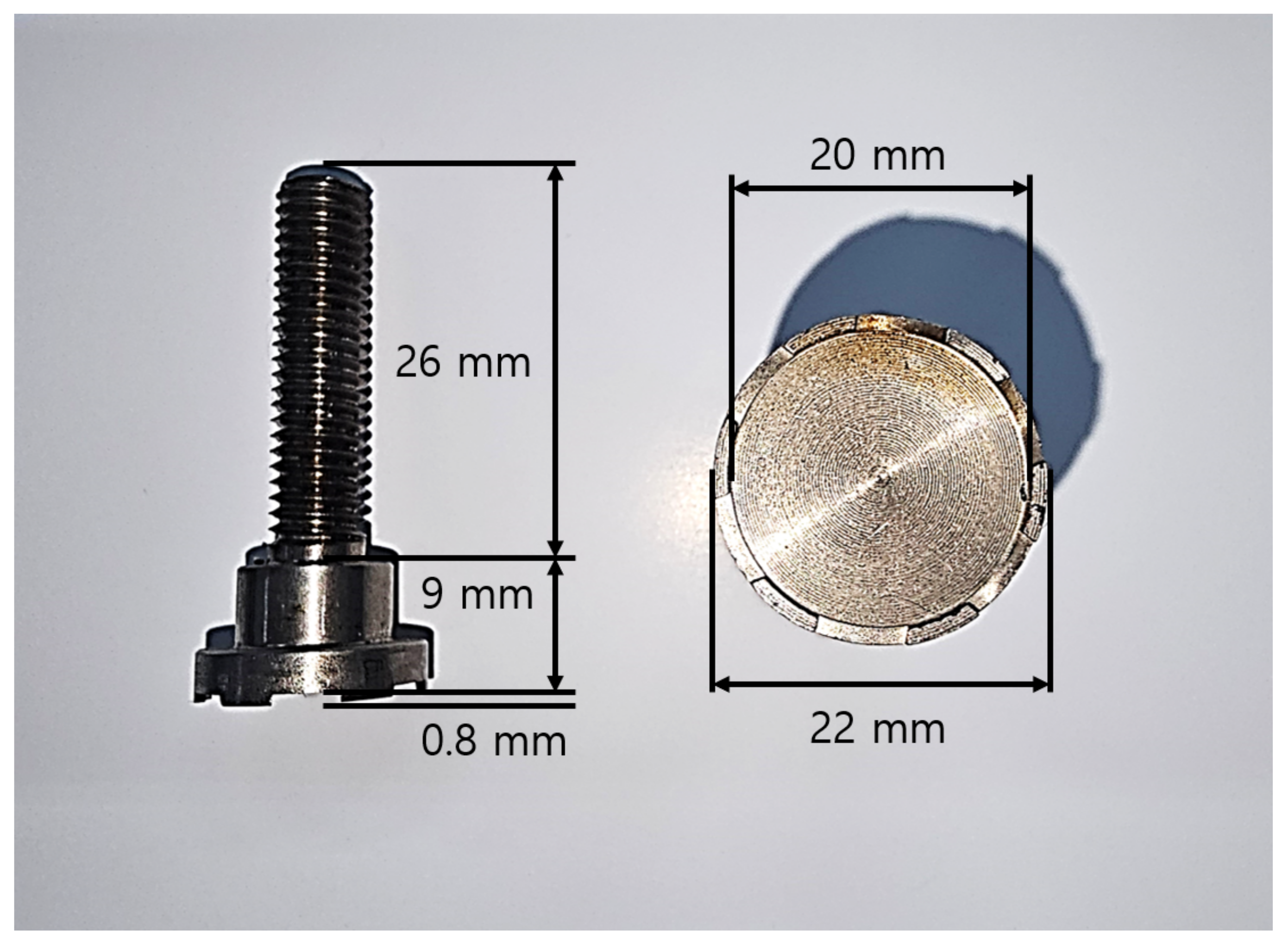
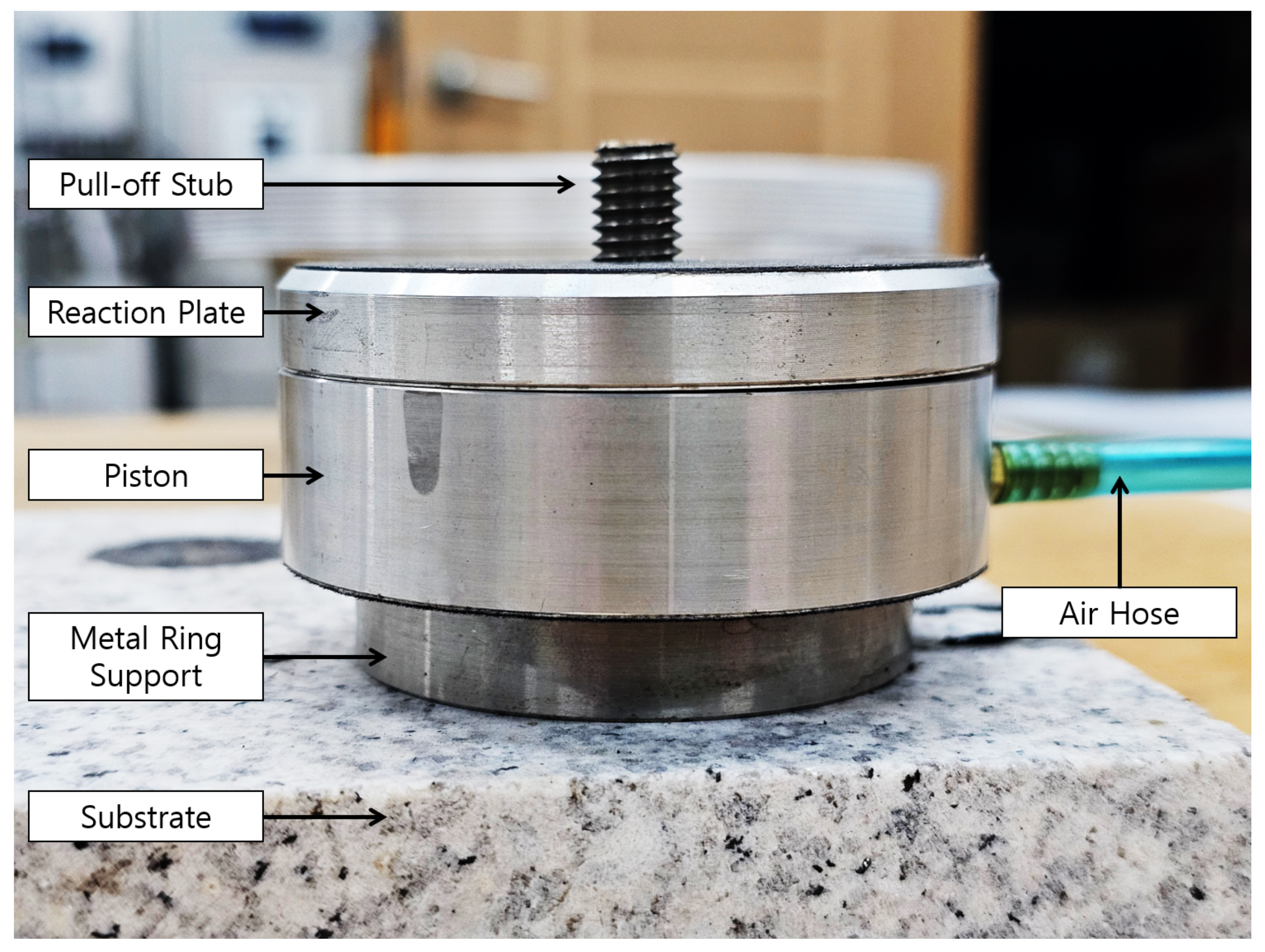
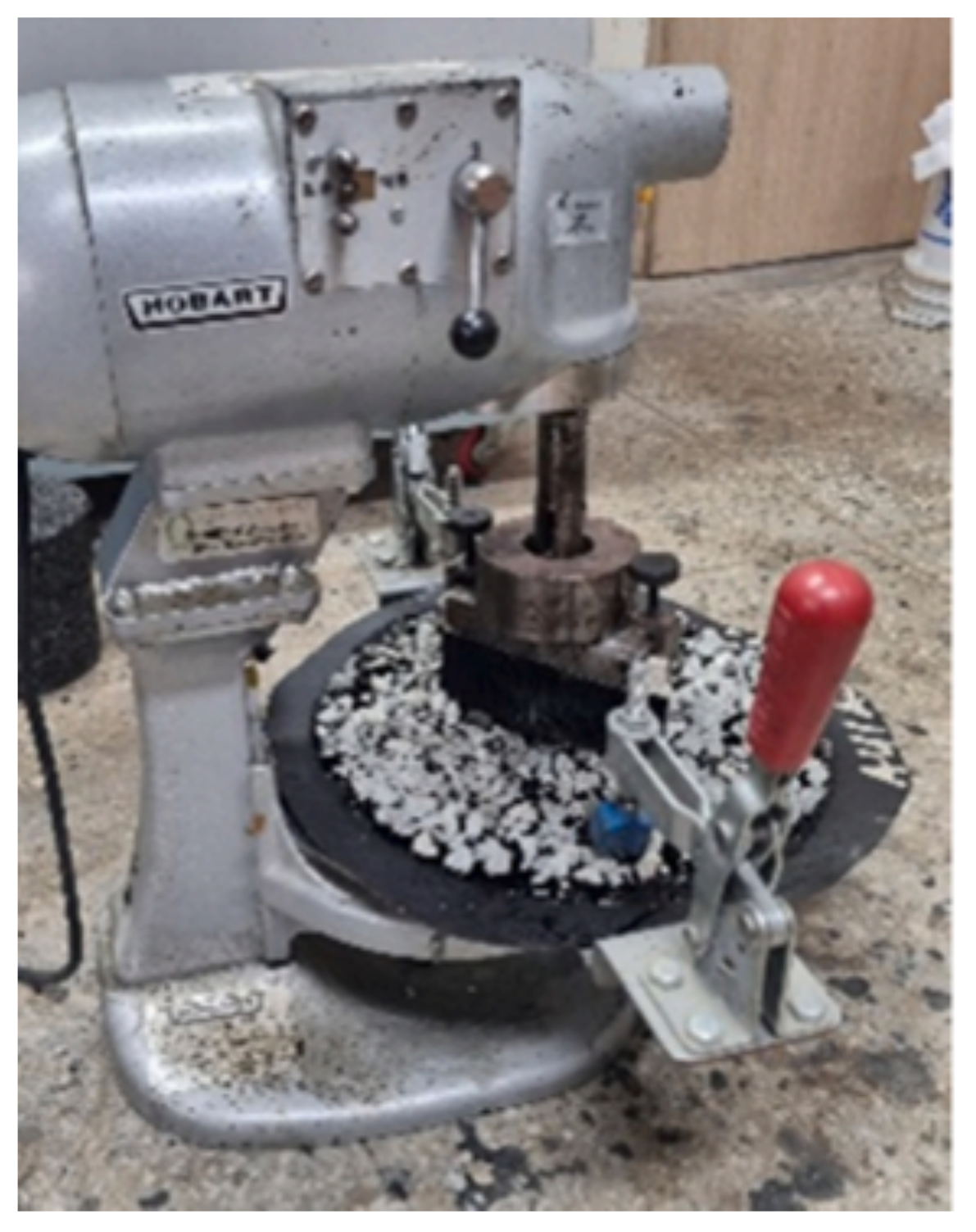





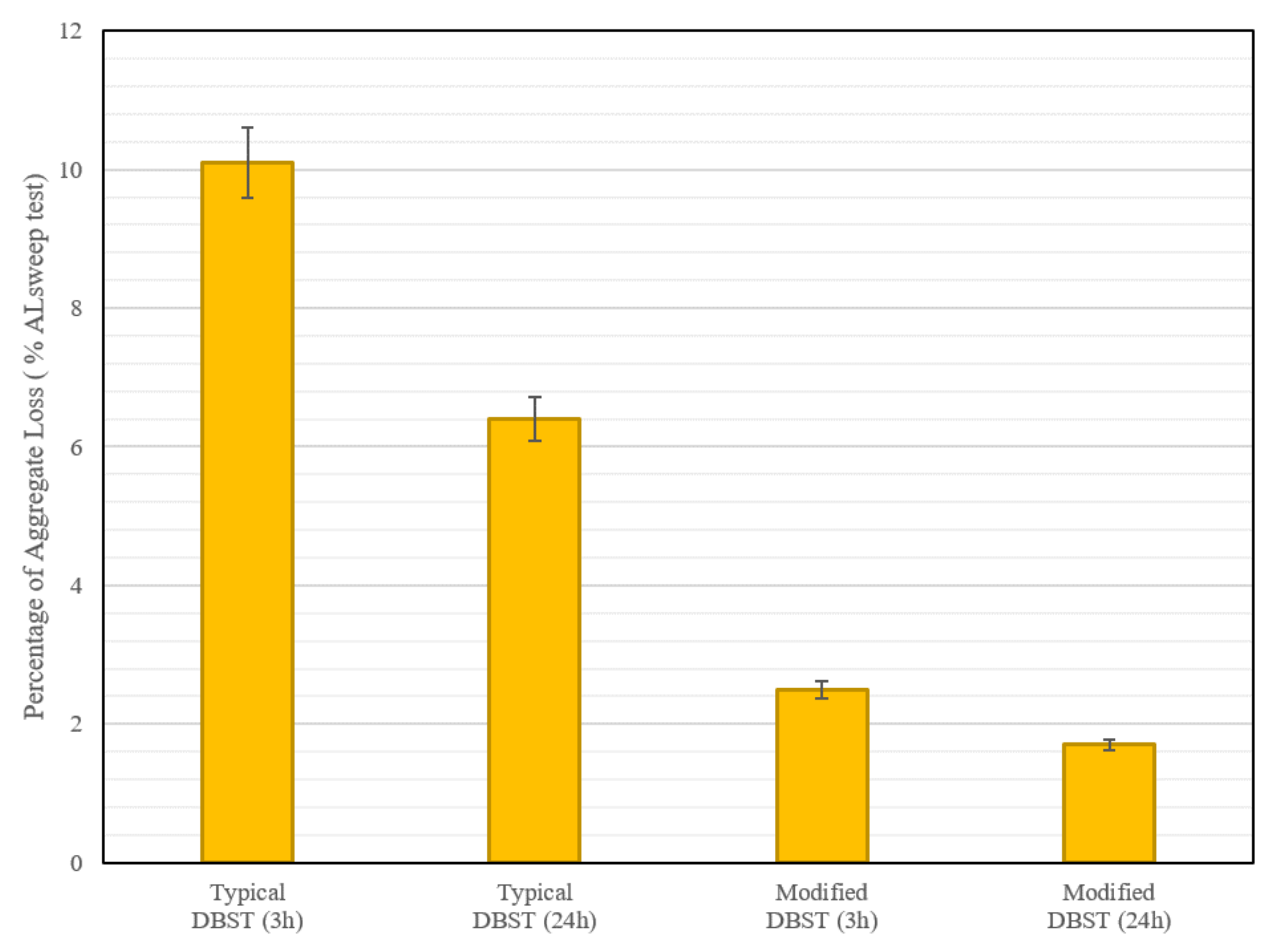
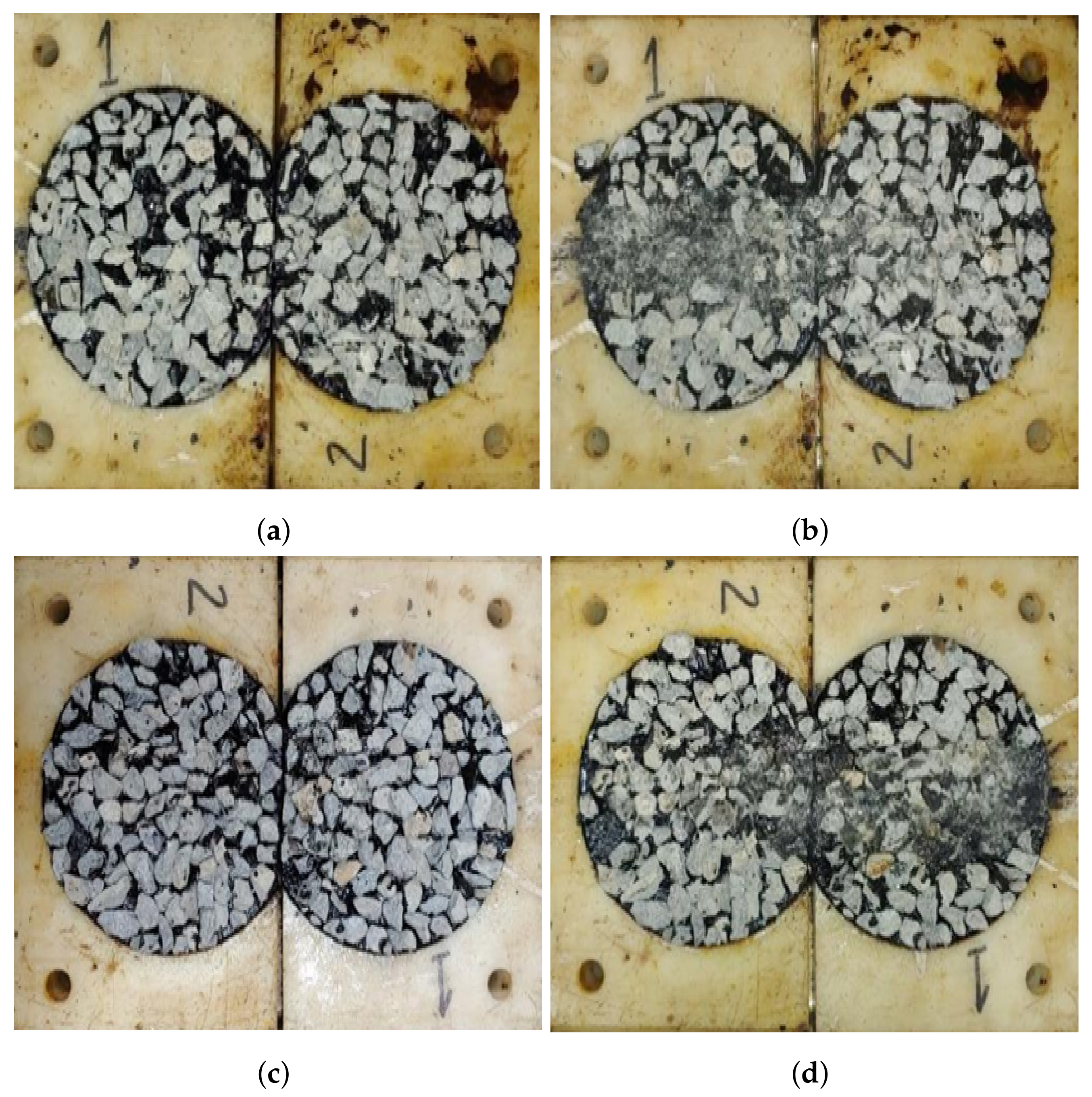
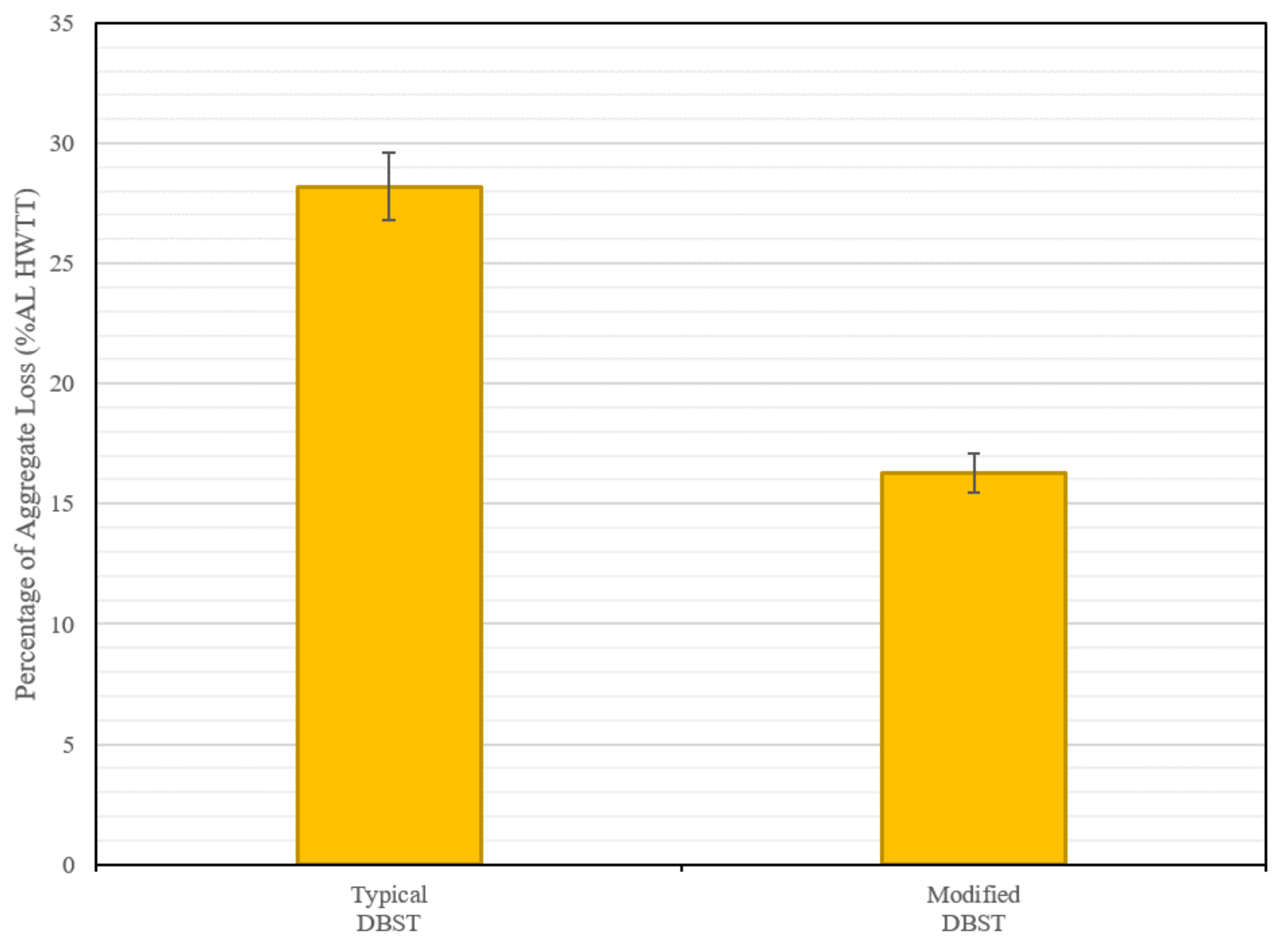

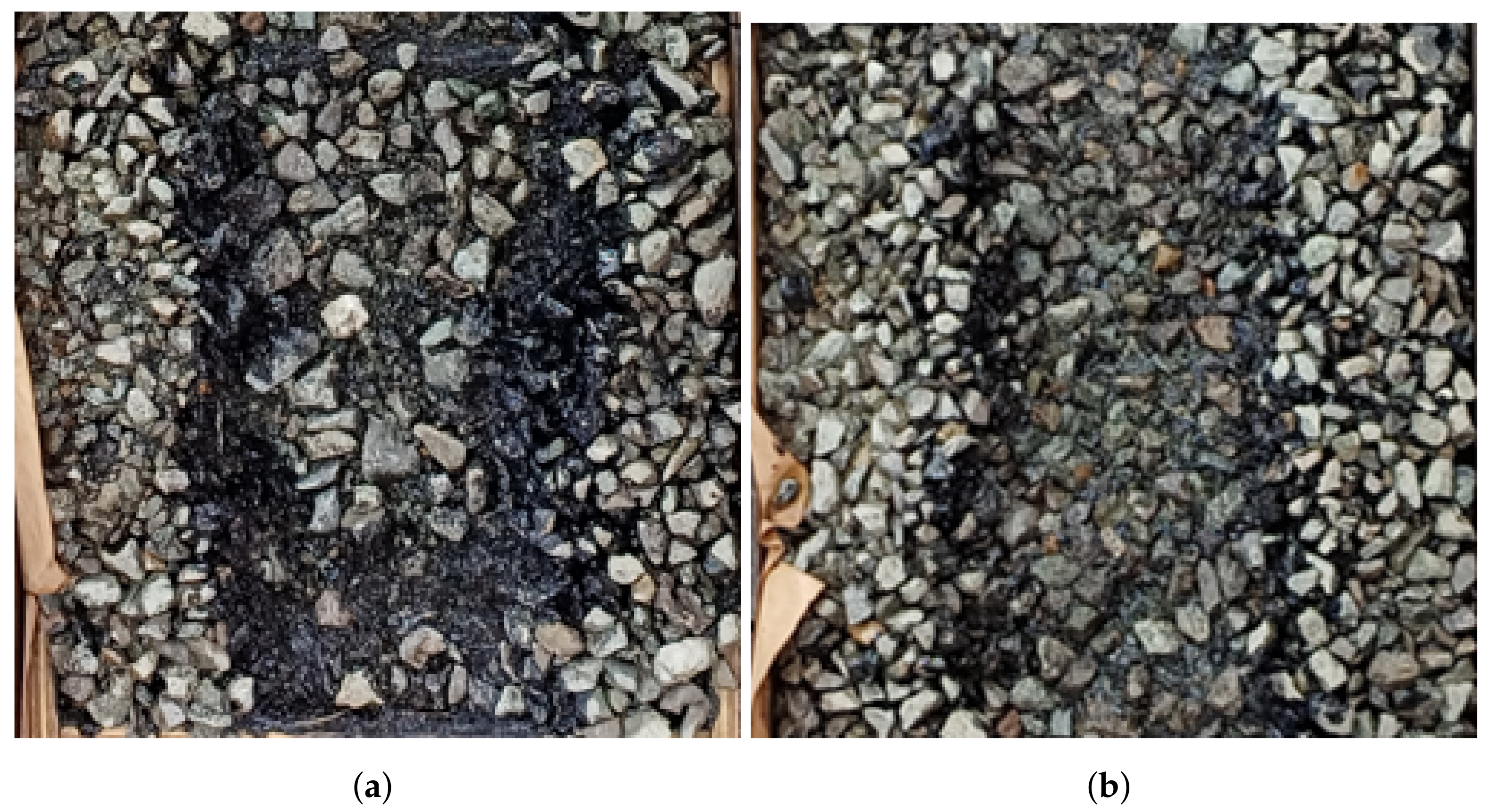
| Sieve Size (mm) | Percentage Retained for Aggregates on the First Layer (%) | Percentage Retained for Aggregates on the Second Layer (%) |
|---|---|---|
| 19 | 0 | 0 |
| 12.5 | 90 | 10 |
| 9.5 | 100 | 90 |
| 4.75 | 100 | 100 |
| 2.36 | 100 | 100 |
| 1.18 | 100 | 100 |
| Properties | First Layer Aggregates | Second Layer Aggregates |
|---|---|---|
| Median particle size, mm | 15.4 | 7.1 |
| Flakiness, % | 20.9 | 11.2 |
| Average least dimension, mm | 10.8 | 5.2 |
| Bulk specific gravity | 2.64 | 2.65 |
| Absorption, % | 1.9 | 1.01 |
| Loose unit weight, kg/m3 | 1502 | 1520 |
| Void content, % | 42.9 | 42.5 |
| Properties | CRS2 | CRS2P |
|---|---|---|
| Viscosity, 122 °F, s. | 150–400 | 150–400 |
| Sieve test, % | 0.1 | 0.1 |
| Demulsibility, % | 40 | 70 |
| Storage stability, 1 day, % | 1 | 1 |
| Particle charge | Positive | Positive |
| Residue distillation, % by weight | 65 | 65 |
| Oil distillate, % by volume of emulsion | 0.5 | 0.5 |
| Penetration, 25 °C (77 °F), 100 g, 5 s | 120–160 | 90–150 |
| Ductility, 25 °C (77 °F), 5 cm/min, cm | 100 | 50 |
| Solubility in trichloroethylene, % | 97.5 | 97 |
| Properties | Values |
|---|---|
| Density | 2.44 g/cm3 |
| Tensile strength | 1700 MPa |
| Tensile elongation | <5% |
| Modulus of elasticity | 73 GPa |
| Properties | Values |
|---|---|
| Loading application | Four pneumatic wheels in closed loop |
| Loading wheel diameter | 300 mm |
| Loading wheel width | 70 mm |
| Loading wheel spacing | 1.26 m |
| Loading wheel inflation pressure | 400–800 kPa |
| Axle wheel load | 1.8–2.9 kN |
| Sinusoidal loading frequency | 2 Hz |
| Resting time between loading | 0.5 s |
| Loading wheel speed | 1–9 km/h |
| Lateral wandering displacement | 80–150 mm |
Disclaimer/Publisher’s Note: The statements, opinions and data contained in all publications are solely those of the individual author(s) and contributor(s) and not of MDPI and/or the editor(s). MDPI and/or the editor(s) disclaim responsibility for any injury to people or property resulting from any ideas, methods, instructions or products referred to in the content. |
© 2024 by the authors. Licensee MDPI, Basel, Switzerland. This article is an open access article distributed under the terms and conditions of the Creative Commons Attribution (CC BY) license (https://creativecommons.org/licenses/by/4.0/).
Share and Cite
Kim, J.W.; Elipse, C. Effect of Simultaneous Application of Glass Fiber Reinforcement and Polymer-Modified Asphalt Emulsion on DBST’s Resistance to Aggregate Loss Using Laboratory Investigation. Coatings 2024, 14, 702. https://doi.org/10.3390/coatings14060702
Kim JW, Elipse C. Effect of Simultaneous Application of Glass Fiber Reinforcement and Polymer-Modified Asphalt Emulsion on DBST’s Resistance to Aggregate Loss Using Laboratory Investigation. Coatings. 2024; 14(6):702. https://doi.org/10.3390/coatings14060702
Chicago/Turabian StyleKim, Je Won, and Carlo Elipse. 2024. "Effect of Simultaneous Application of Glass Fiber Reinforcement and Polymer-Modified Asphalt Emulsion on DBST’s Resistance to Aggregate Loss Using Laboratory Investigation" Coatings 14, no. 6: 702. https://doi.org/10.3390/coatings14060702
APA StyleKim, J. W., & Elipse, C. (2024). Effect of Simultaneous Application of Glass Fiber Reinforcement and Polymer-Modified Asphalt Emulsion on DBST’s Resistance to Aggregate Loss Using Laboratory Investigation. Coatings, 14(6), 702. https://doi.org/10.3390/coatings14060702






